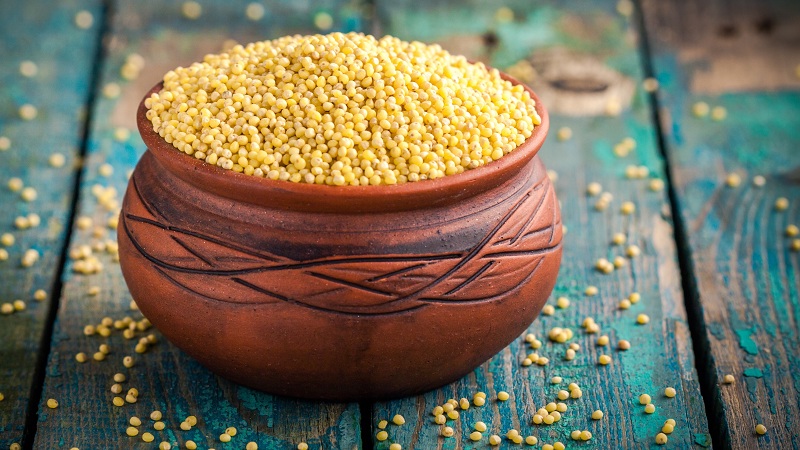I’m passionate about three things in life—cute animals, aviation, and grains. Many are constantly on the hunt for rice alternatives for health-related reasons, but I genuinely enjoy other grains over the snoozefest that is white rice. In all their granular, textural goodness, rice adjacents like red rice, oats, and quinoa will always reign supreme as the superior grains—at least in my eyes.

You know that feeling of confusion when you walk into Scoop or The Source and about 20 different grain types hit you right in the face? Don’t fret, I’m here to share my completely unsolicited love for grains in this listicle about 8 types of grains you can look to when mealtime comes a-knocking.
1. Oats

What it is:
Probably the grain that’s the most ‘seen’ so to speak, oats are just about everywhere you look, and they can be found in so many forms today. Oats are naturally rich in antioxidants and beta-glucan, which are anti-inflammatory and improve effects on blood glucose control respectively.
What makes it unique:
The oats that we find in our produce tend not to have their germ and bran removed, making them mostly whole grain.
What it’s used in:
Oats are often eaten in the form of oatmeal as both sweet and savoury (my personal favourite), used in baked goods like cookies and bread, as well as the most recently popular oat milk. But my favourite way of consuming oats are straight up, downright raw. Yes, many consider it an abomination but it is what it is. There’s nothing quite like raw chewy oats atop piquant, sugarless Greek yoghurt. Fight me.
From: S$2.50 per kg
2. Millet

What it is:
Millet is a small-seeded gluten-free, whole grain that is suitable for most diets. There are two species types—the Proso millet which is found throughout Central Asia, and also the Pearl millet that is grown in Africa and the Indian subcontinent.
What makes it unique:
Stereotypically, rice has always been thought of as one of the very few personality traits an Asian has. But interestingly enough, it’s believed that before rice, came millet. This was because millet was able to thrive in regions where other types of grains wouldn’t. The more you know, right?
What it’s used in:
Because of its versatility, millet is used in cereal, bread, millet flour, and even beer.
From: S$2.40 (500g)
3. Barley

What it is:
Barley is very important in my diet personally, and I drink unsweetened barley water almost daily. Like oats, barley is also high in beta-glucan, contributing to positive cardiovascular health. Barley was widely popular in ancient times, but eventually got replaced by wheat and rye when bread gained in popularity.
What makes it unique:
Barley can be identified by its off white plump pearls that are usually uniform in size.
What it’s used in:
Unsurprisingly, a huge proportion of the world’s barley supply goes into making beer. When malted, it can be used to brew alcohol, but in its true form, barley can be enjoyed soups, stews, cereals, drinks, tea, flour, noodles, and porridge.
From: S$1 (400g)
4. Rye

What it is:
Speaking of rye, I know a guy. Because it grows better in harsher, colder climates, rye has been widely used in Russia and Northern Europe for bread-making purposes. Rye is closely related to wheat and the aforementioned barley, which is probably why their stalks look so similar aesthetically.
What makes it unique:
Amongst the grain group, having a high level of fibre in its endosperm is something that’s specific to rye. That’s the reason why many turn to rye as a low GI alternative to rice. Rye also contains less gluten and is denser than wheat flour. And fun fact, this elusive pumpernickel bread that you hear from fairy tales and stories actually refers to bread that’s made wholly from rye flour and made in Germany specifically.
What it’s used in:
Aside from the obvious bread products, rye is also used in pretzels, flour, as cereal, and also to make alcohol like whisky and beer.
From: S$4.99 (1kg)
5. Wheat

What it is:
I’ve covered its cousins, rye and barley, so it’s only fitting that I don’t leave wheat out in this list. My fondest memory of wheat is growing it in my Minecraft garden and then using it to breed cows and make pasta, which I still do until this very day. But enough of my (long overgrown) hobbies, let’s turn our attention to the fact that wheat is the most popular cereal crop in the world.
And understandably so. Due to its wide range of types, wheat is one of the most versatile crops in the culinary industry. Most commonly, we’ve got durum wheat, which is used to make pasta, and bread wheat, which is used for, well, everything else.
What makes it unique:
Just like water, ‘hard’ and ‘soft’ wheat actually also exists. Hard wheat is bronze-coloured, has higher gluten content, and is mostly used to make bread. Soft wheat, on the other hand, is light golden and sometimes called white wheat instead. Compared to hard wheat, it has more starch and less gluten and hence is good for making sauces, baking cakes, pastries, and other desserts.
What it’s used in:
You’ll find wheat in many forms and in many stages of the food production process in everyday produce—the comprehensive list of what wheat is used for goes on and on, really. But to name a few, you’ll find wheat content in bread, biscuits, noodles, pasta, pizza, polenta, semolina, gravy, muesli, cereals, and just about almost any traditional dessert fathomable.
From: S$1.20 (400g)
6. Quinoa

What it is:
Another highly popular (read: basic, considered by some) grain is the legendary quinoa that everyone seems to speak of, and also the very same grain you’ll find inside a protein bowl of a Californian’s lunch. Considered a pseudo-cereal, quinoa is a low-carb grain that originates from the Andes.
What makes it unique:
Quinoa contains a high protein content as well as all essential amino acids, making it a superfood.
What it’s used in:
People will find the most creative ways to incorporate grains into their meals these days, it seems. You can find quinoa in fried rice, flour, salads, soups, burgers, and even shakes.
Price: From S$8.40 (16oz/454g)
7. Buckwheat

What it is:
Here’s another pseudo-cereal for you—buckwheat, which has a nut-like appearance and is incorporated into many staples you’ll find in the supermarket.
What makes it unique:
Each serving consists of 12 different amino acids, making it the unparalleled cholesterol-lowering food studied up to date. This means that it’s great for those trying to beat weight gain and diabetes because of its ability to reduce and stabilise blood sugar levels after meals.
What it’s used in:
The most common form of buckwheat is probably soba noodles, but buckwheat can also be used in various dishes like risotto, curries, stews, crepes, pancakes, and even gluten-free bread.
Price: From S$4.90 (350g)
8. Rice

What it is:
Of course, I couldn’t go through a whole listicle about grains without mentioning rice—that’d just be downright disrespectful. You’ll find rice in many wonderful iterations—brown, red, black basmati, jasmine, black, arborio, the list goes on, truly. The fascinating thing about rice is how it’s found in so many different regions in Asia, manifesting as different species and in different versions of similar dishes.
What makes it unique:
Perhaps the interesting thing about rice is just how diverse it is, and how each type possesses its unique qualities, taste profile, stickiness, length, texture, and aroma. It’s a different rice experience with every kind. Also, the Great Wall of China is held together by sticky rice mortar.
What it’s used in:
If you thought that the list of uses was long for the other grains, wait ‘til you hear the one about rice. I could spend a whole five paragraphs more to list everything, but just to name the more popular uses of rice, we have noodles, cakes, sake, bran oil, soups, cereals, porridge, and wines.
Price: From S$9.20 (2.5kg)
Other articles you might like:






